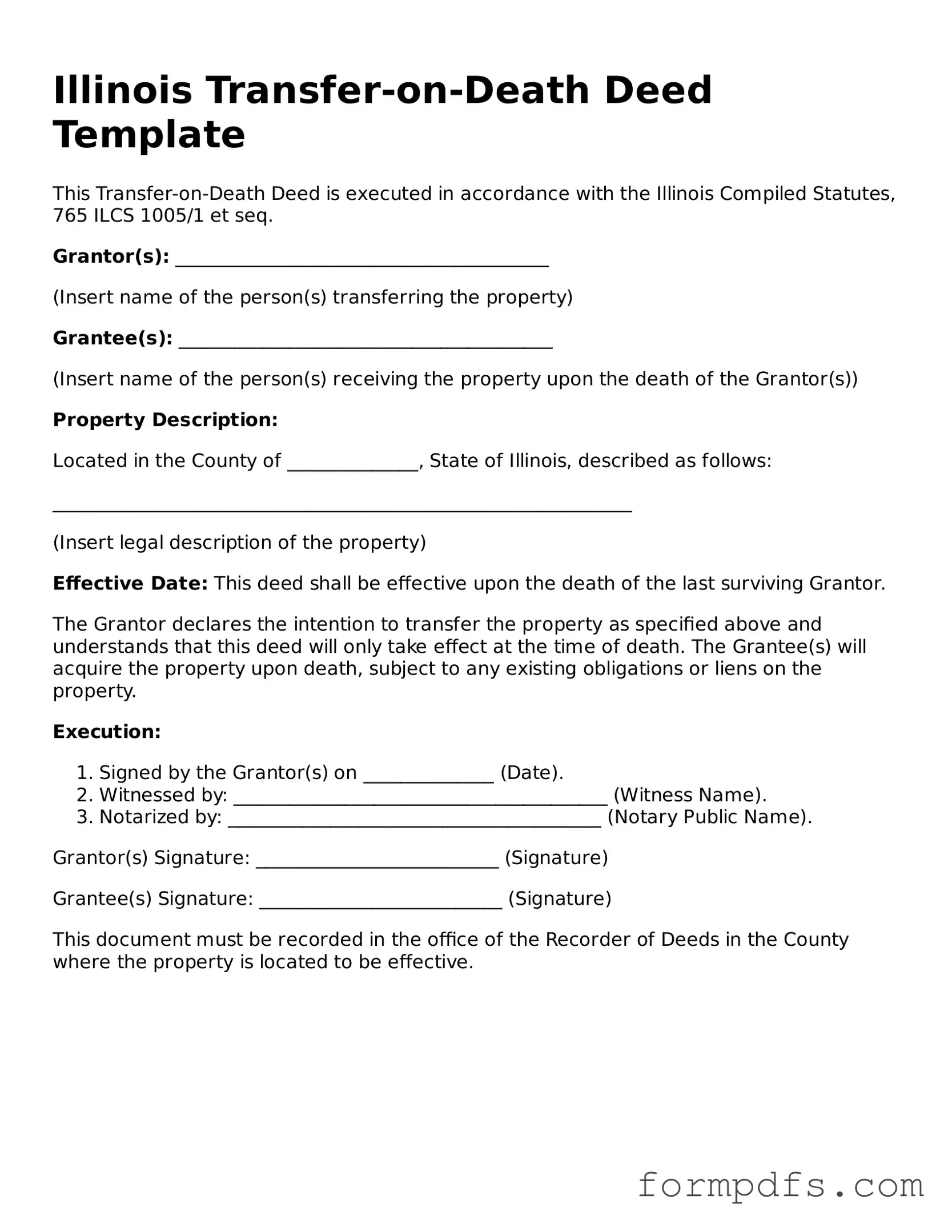What is a Transfer-on-Death Deed in Illinois?
A Transfer-on-Death Deed (TODD) is a legal document that allows property owners in Illinois to transfer their real estate to beneficiaries upon their death, without the need for probate. This means that the property can pass directly to the named beneficiaries, simplifying the transfer process and potentially reducing costs and delays associated with probate court. The deed must be properly executed and recorded to be valid.
Who can use a Transfer-on-Death Deed?
Any individual who owns real estate in Illinois can use a Transfer-on-Death Deed. This includes homeowners and property investors. However, it is important to ensure that the property is not subject to any liens or other legal claims that could complicate the transfer. Additionally, the owner must be of sound mind and legal age to execute the deed.
How do I create a Transfer-on-Death Deed?
To create a Transfer-on-Death Deed, you will need to fill out a specific form that includes details about the property and the beneficiaries. The form must be signed in front of a notary public. After signing, the deed must be recorded with the appropriate county recorder's office where the property is located. This ensures that the deed is legally recognized and enforceable.
Can I change or revoke a Transfer-on-Death Deed after it is executed?
Yes, you can change or revoke a Transfer-on-Death Deed at any time before your death. To do this, you must execute a new deed that either revokes the previous one or alters the beneficiaries. It is crucial to record any changes with the county recorder’s office to ensure that your wishes are accurately reflected in public records.
What happens if I do not name a beneficiary in the Transfer-on-Death Deed?
If no beneficiary is named in the Transfer-on-Death Deed, the property will be treated as if the deed did not exist. This means that the property will go through the probate process, and the court will determine how the property is distributed according to state law. Therefore, it is essential to name at least one beneficiary to avoid complications.
Are there any tax implications associated with a Transfer-on-Death Deed?
Generally, a Transfer-on-Death Deed does not trigger any immediate tax consequences for the property owner. The transfer occurs upon death, so the property is not considered part of the owner's taxable estate during their lifetime. However, beneficiaries may be subject to property taxes and other fees once the property is transferred. Consulting a tax professional can provide clarity on potential tax implications.
Is a Transfer-on-Death Deed the same as a will?
No, a Transfer-on-Death Deed is not the same as a will. While both documents deal with the distribution of property after death, a will goes through the probate process, while a Transfer-on-Death Deed allows for direct transfer without probate. This distinction can significantly affect the speed and cost of transferring property to heirs.
Can I use a Transfer-on-Death Deed for all types of property?
A Transfer-on-Death Deed can only be used for real estate, such as homes, land, and commercial properties. It does not apply to personal property, bank accounts, or other types of assets. For those assets, different estate planning tools may be necessary to ensure they are transferred according to your wishes.
